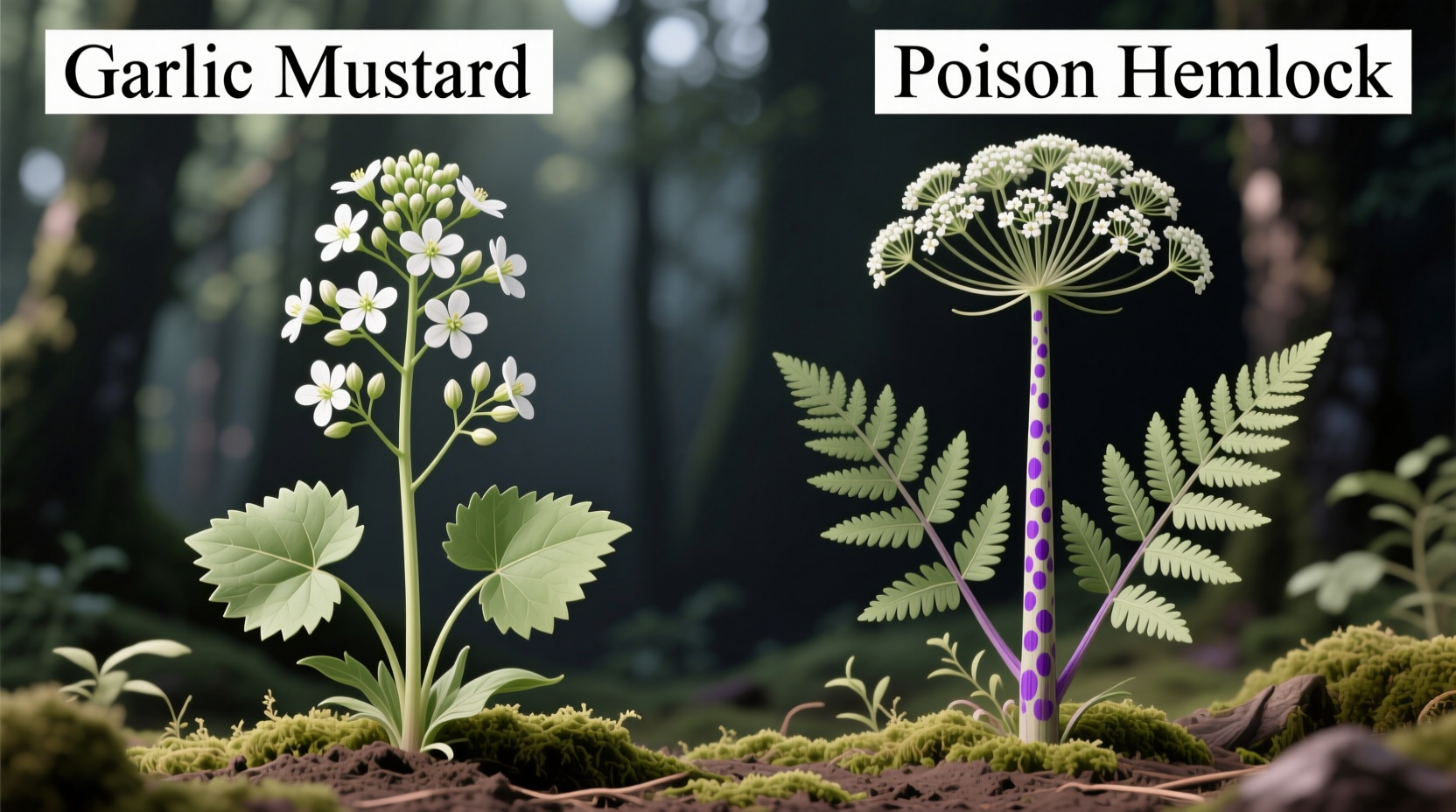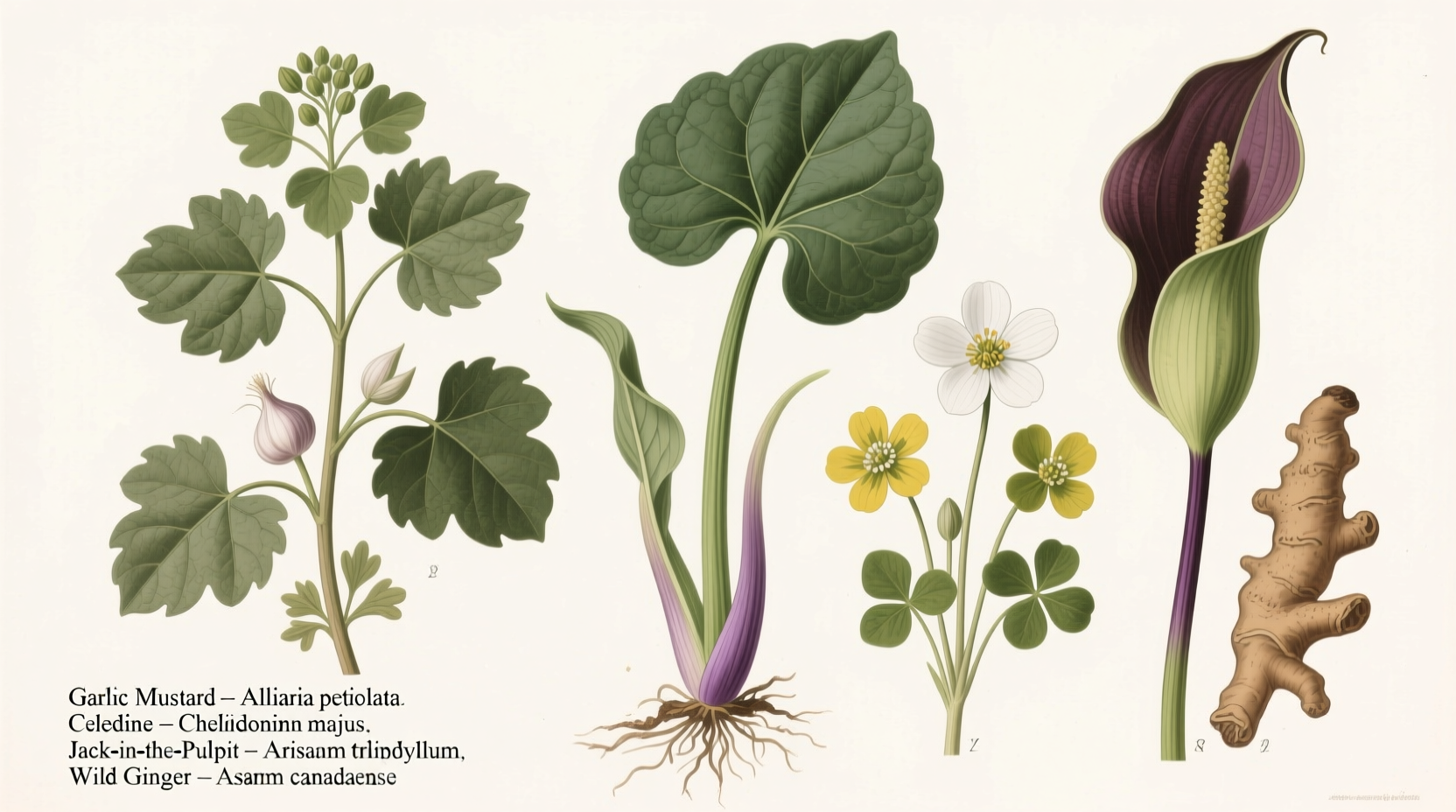For foragers and nature enthusiasts, correctly identifying garlic mustard and distinguishing it from similar species is critical for safety. This comprehensive guide provides the visual cues and botanical characteristics you need to confidently differentiate garlic mustard from its potentially dangerous look-alikes throughout the growing season.
Why Proper Identification Matters
Garlic mustard, while edible and invasive in North America, shares visual similarities with several toxic plants. The most dangerous confusion occurs with poison hemlock (Conium maculatum), which caused the death of Socrates and remains highly toxic today. Each year, emergency rooms treat cases of mistaken plant identification, making accurate visual differentiation a matter of safety.

Key Identification Features of Garlic Mustard
Garlic mustard (Alliaria petiolata) displays these consistent characteristics:
- Leaves: Heart-shaped with coarsely toothed edges, growing in a basal rosette the first year and alternately on flowering stems the second year
- Stem: Smooth, hairless, and slightly ribbed
- Flowers: Small white flowers with four petals in a cross shape (blooming April-June)
- Odor: Distinct garlic smell when leaves are crushed
- Height: 1-4 feet tall at maturity
Common Garlic Mustard Look-Alikes Comparison
Understanding the critical differences between garlic mustard and similar plants prevents dangerous misidentification. This comparison focuses on the most frequently confused species according to the USDA Plants Database and university extension services.
| Plant Species | Leaf Characteristics | Stem Features | Flower Structure | Distinctive Traits |
|---|---|---|---|---|
| Garlic Mustard | Heart-shaped, coarsely toothed | Smooth, hairless, slightly ribbed | White, four petals in cross shape | Strong garlic odor when crushed |
| Poison Hemlock | Fern-like, finely divided | Purple-spotted, hairless | White, clustered umbrella-shaped | Musty odor, extremely toxic |
| Wild Garlic/Onion | Narrow, grass-like, hollow | Hollow, round | White or pink clustered flowers | Onion/garlic smell throughout plant |
| Jack-by-the-Hedge | Similar shape but less toothed | Hairy | White flowers, similar arrangement | No garlic odor |
Seasonal Identification Guide
Plant characteristics change throughout the growing season, affecting identification accuracy. The University of Wisconsin-Madison Extension notes that misidentification peaks in early spring when plants are emerging.
Spring (March-May)
Garlic mustard displays its distinctive basal rosette of kidney-shaped leaves. This is when confusion with wild garlic occurs, but wild garlic has round, hollow leaves that smell strongly of onion throughout the plant, while only garlic mustard's leaves produce the garlic scent when crushed.
Summer (June-August)
Second-year plants send up flowering stalks. Poison hemlock becomes most dangerous to confuse with garlic mustard during this phase. Hemlock's purple-spotted stem and lack of garlic odor are critical differentiators. The USDA notes that hemlock's toxicity remains dangerous even when dried.
Fall (September-November)
Garlic mustard produces seed pods (siliques) that hang downward. Look for the distinctive triangular seed pods and continued garlic scent in crushed leaves. Wild garlic goes dormant during this period, eliminating confusion.
Safety Considerations for Foragers
The National Park Service emphasizes that proper identification requires examining multiple characteristics, not just one feature. When foraging for garlic mustard:
- Always perform the crush test - genuine garlic mustard emits a strong garlic aroma
- Check for stem characteristics - garlic mustard has smooth, hairless stems
- Examine leaf arrangement - garlic mustard has alternate leaf placement
- Verify flower structure - four-petaled white flowers in clusters
- Consult multiple field guides before consumption
Remember that environmental factors can cause variations in plant appearance. The Cornell University Cooperative Extension reports that soil conditions and light exposure can affect leaf shape and size, making identification more challenging in certain habitats.
Authoritative Identification Resources
For definitive identification, consult these verified resources:
- USDA Plants Database - Official taxonomic information and distribution maps
- University of Wisconsin-Madison Extension - Detailed identification guide with seasonal photos
- National Park Service Invasive Species Program - Management and identification resources
- University of Florida IFAS Extension - Comprehensive botanical description
When in doubt about plant identification, consult a certified botanist or experienced forager. Never consume a plant you cannot identify with 100% certainty. The North American Plant Protection Organization reports that plant misidentification accounts for approximately 15% of foraging-related poisonings annually.











 浙公网安备
33010002000092号
浙公网安备
33010002000092号 浙B2-20120091-4
浙B2-20120091-4